If you see birds flying above you, chances are they are flying in a v formation. Almost every species that flocks do it! But why do birds fly in a v formation? And is one side longer than the other?
The main reason birds fly in a V formation is to conserve energy. The way birds conserve energy cleverly utilizes the slipstream that the bird in front of them creates while flying. The reason why one side is longer than the other is that when there is a crosswind one side of the V is harder for the birds to fly on. This ends up being the shorter side.
Let’s learn more about why birds fly in a v formation.
The Wake
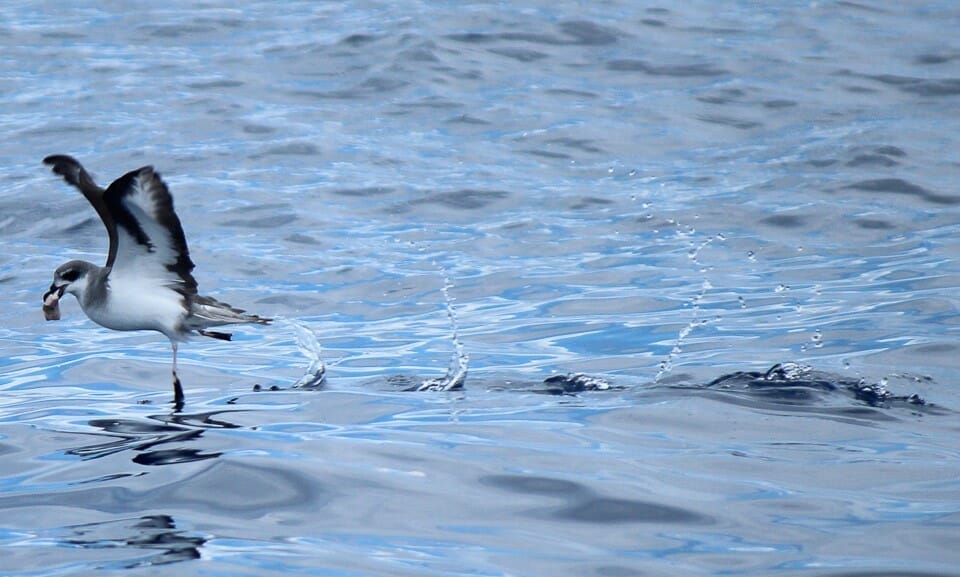
Like the water behind a moving boat, when a bird passes through the air, it leaves a wake behind it. For a short distance after the boat passes, the wake is quite uniform. The further away the boat gets, the more this uniformity breaks down into chaotic patterns.
Very similar patterns arise when a bird passes through the air. Air is not as viscous as water, and unlike water, air can be compressed. This makes airless stable, and more chaotic in nature. Thus the uniformity of wake patterns breaks down much faster in the air than they do in the water.
Author Note: Remember, the air has mass, it is a physical thing just like water, but because air can be compressed, it has no set volume. This means a gallon of high air pressure contains a greater physical mass (or a greater number of air molecules) than 1 gallon of low air pressure.
How Flight Works
Flying requires an area of high pressure beneath the wing and low pressure above the wing that results in lift. A plane’s wings achieve this through their shape – the top of the wing surface curves, from front to back. Air flows faster over a convex surface than it does over a flat or concave surface.
Because the air moves faster over the top of the wing than the bottom, there is a higher pressure beneath the wing than there is above it.
Instead of the low-pressure areas directly behind the leader, used by Nascar, birds utilize the high-pressure areas that occur from their aerodynamic shapes. The shape of a bird naturally focuses air out from the body and along with the wings to either side.
At the wingtip, the high-pressure air beneath spirals into the low-pressure area above the wing, generating a high-pressure vortex. By catching these high-pressure areas beneath their wings, the birds following are able to utilize this additional high pressure to augment their lift, and that of those, again behind them.
The V Shape
As described, the ideal location for the gain in lift is just behind, above, and to either side of the leader, but directly behind, is not optimal. This naturally leads to the classic V shape formations (or echelons) that many migratory birds adopt when crossing our skies around the equinoxes.
The V echelon is also useful for members of the flock to keep an eye on one another for safety and support. On trans-continental journeys, support from the flock is crucial.

Why is One Side Longer Than the Other?
Some refer to one side of the formation being longer as a ‘J’ echelon. Birds will adopt this type of formation in a crosswind. The strength of the wind determines how wide the formation flies. In high wind, the long side will usually be longer and fly straighter behind the leader, while the short side will fly wider with fewer members, sometimes as little as 2 or 3 birds.
This is due to the pressure areas being affected by the strength and direction of the prevailing wind.
The reason the long side is into the prevailing wind is due to the way wingtip vortices work. At the wingtip, the low and high-pressure areas, respectively above and below the wing, come together, creating a vortex. The direction that the vortex spirals is up, over the wingtip, and in towards the body.
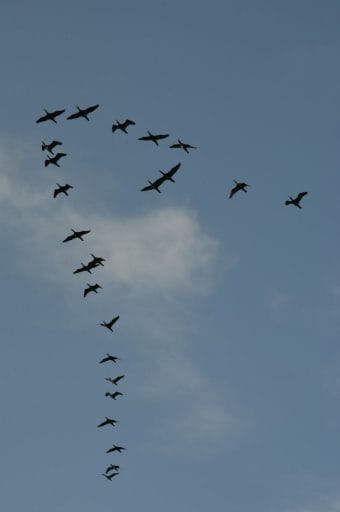
Author Note: A crosswind coming from the right will keep the vortex from the right-wing in a tight spiral. This helps to maintain the integrity of the vortex for longer, so more birds can use it. The vortex from the left-wing, however, is spiraling into the wind.
As such, a short distance behind the leader, its rotation begins to slow down, undermining the integrity of the vortex, and with it, the added efficiency.
Birds will seldom fly directly into the wind, but even more rarely, fly with a direct crosswind, depending on the wind direction and speed, and of course, their destination. Birds will usually find an angle that takes advantage of the lift generated by a slight headwind.
This angle can be adjusted to balance the benefit of an easy flight with the haste to reach the destination.
Efficient Flying
Studies show that the benefit of the additional lift, generated by wingtip a vortex, increases for each bird in turn. This was proved using heart rate monitors and GPS trackers on a flock of Ibis. The GPS locators were able to keep track of the position of each bird in the flock and its location within the formation.
At the same time, the heart rate monitors were able to record which of the birds was expending the most or least amount of energy.
This study also brought to light some other interesting facts about the way birds behave while flying in formation. The common misconception of the flock following along behind a set leader, like ducklings behind their mother, was proved false. The data showed that birds change position as often as once a minute.
This changing of position allows the flock to share the losses and gains from the more and less efficient locations to fly within the formation. Each bird taking turns to fly in the extra lift positions on extended flights showed that by the journey’s end, individuals of the flock had each expended a similar amount of energy.

The Tip of the V
Unsurprisingly, the vertex of the formation was proved to be the most taxing position to fly, and those behind benefit from the leader breaking the air. Interestingly what came to light was that the birds bringing up the rear are having a significantly easier time than those towards the front.
This shows that the passing of each bird adds to the high-pressure area, and theoretically, birds could actively work to increase the pressure by flapping their wings in the right place. Further leading to the assumption that the larger a flock is, the more efficiently they fly together.
A more efficient flock needs to stop less often to feed, and the more ground they can cover.
Sleeping While Flying
You may have heard people say that some birds can sleep while they are flying or ‘sleep on the wing.’ This has been widely accepted for a very long time, but how they sleep has been a topic for debate for almost the same length of time.
Some said that birds would flap their wings a few times and sleep for a few seconds before coming awake to flap a few more times. Others speculated that they were able to sleep uni-hemispherically, i.e., one half of the brain sleeps while the other remains awake.
If you held either of these opinions so strongly that you’d lay a wager on it, recent proof has called all bets off. Using a micro EEG (electroencephalogram) data logger to monitor brain activity, researchers were able to prove that birds can achieve both types of sleep while in flight.
The decoded data showed that birds not only sleep showing USWS (Uni-hemispherical Slow Wave Sleep) patterns but even achieve short periods of bi-hemispherical REM (Rapid Eye Movement) sleep while in flight. Unlike humans, who lose motor function when entering REM sleep, and remain in REM pattern sleep for several hours. Birds only enter the REM pattern sleep for a few seconds at a time.
Motor Function While Sleeping
Author Note: Birds seem to lose control of the motor function in their neck during these brief moments of REM sleep because the data showed that their heads would drop for the same few seconds. Despite this, their flight patterns remained unchanged.
This suggests that there may be certain wing muscles and functions that remain unaffected by REM sleep, or maybe instincts retain some subconscious control.
To clarify and settle the argument of the gamblers out there. Birds will actively flap their wings while showing USWS sleep patterns but would only glide during the few seconds of REM sleep.
Another interesting and previously unconfirmed behavior the birds exhibited was to gain altitude while sleeping at night. This makes sense for a few reasons. Firstly if you’re half asleep, you’re better off further from the ground to give yourself a bit more recovery time. I’ve heard a helicopter instructor pilot use the term “flying 3 mistakes high”.
Another reason for gaining altitude is that predatory birds, as with ground their dwelling prey, also strike at their avian victims from above. The higher you fly, the fewer predatory species you will encounter.
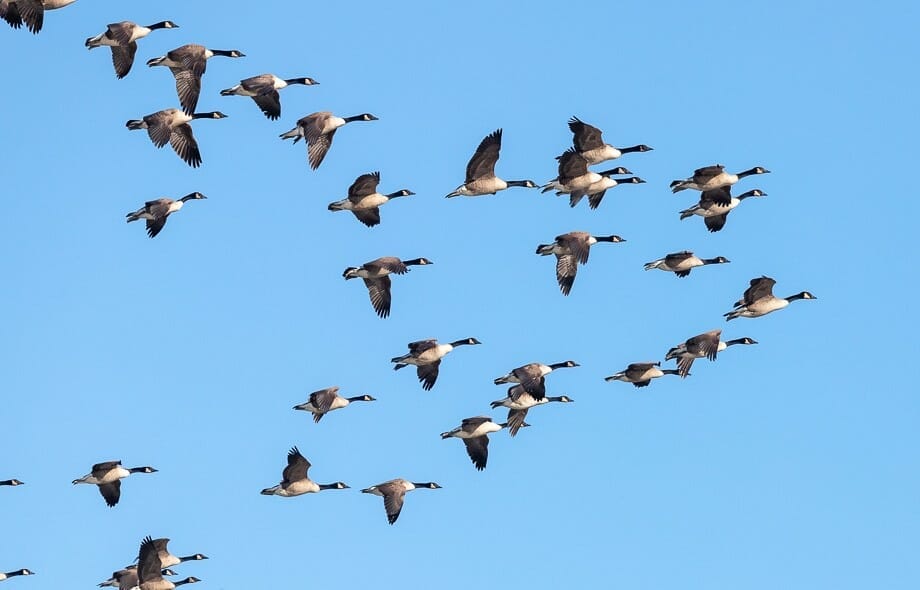
Conclusion
Even the lowest flying migratory birds will fly at double that altitude on long distances, while others fly much higher. Bar-headed geese have been tracked flying at altitudes of over 23,000ft during their twice-yearly migration over the Himalayas.
We hope you found this article on why birds fly in a V formation useful and informative.
Fly high friends!
FAQ
It is called an echelon.
Generally, geese, swans and ducks will fly longer distances in a V formation.
They have excellent memories and can recognize landmarks and geographical features. There is gathering evidence that birds can detect and use magnetic fields to help them navigate.
Geese can cover huge distances when flying in a flock. They average 40 miles and hour and can cover 1,500 miles if necessary.




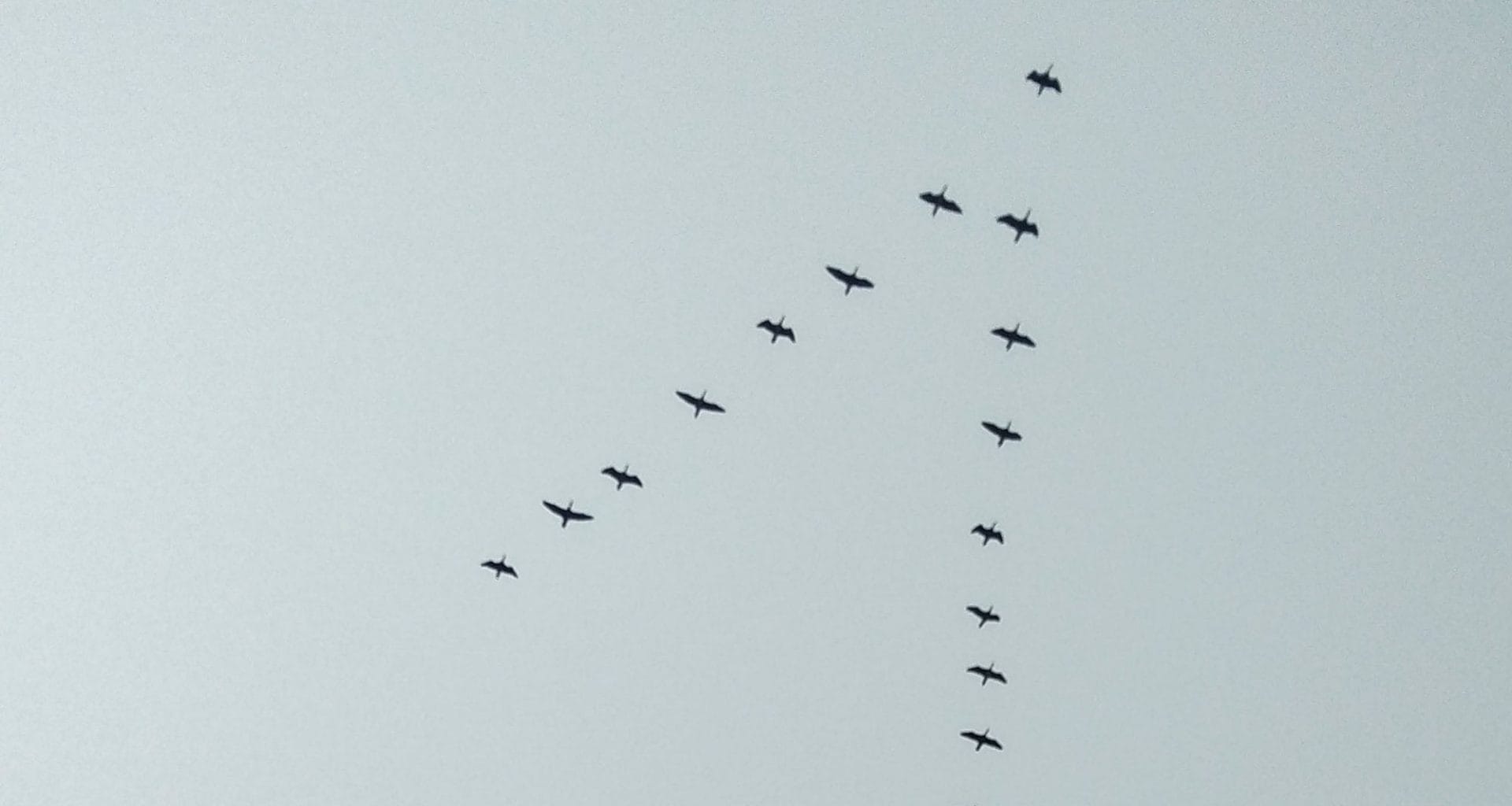
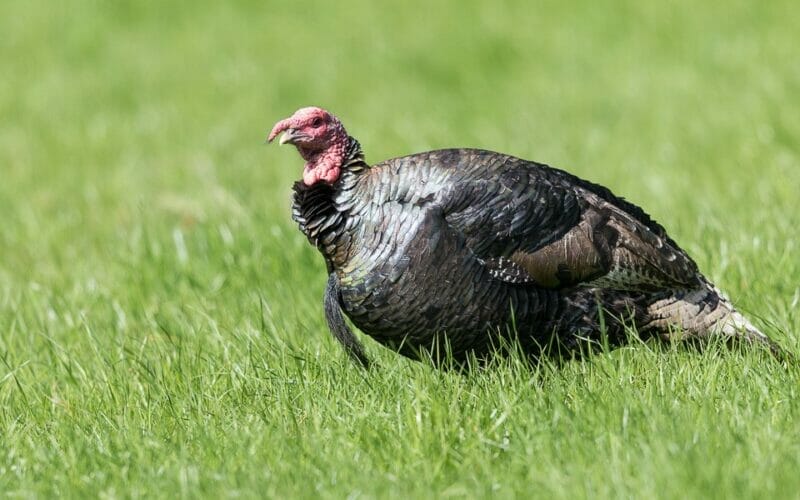
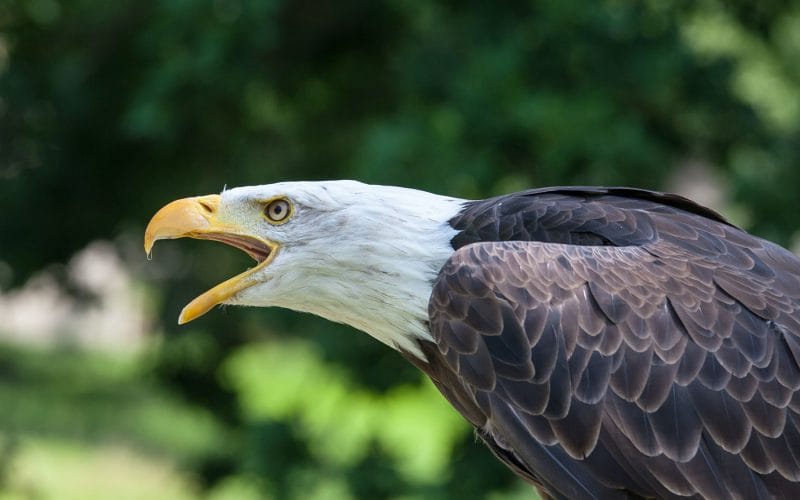

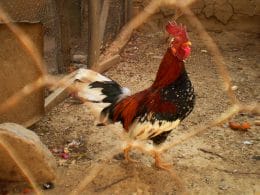
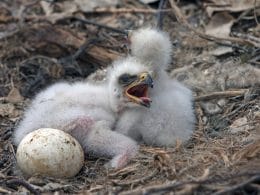

Can I use your photo of V shaped flying in my book about the wonder of Nature ?
amotz.weinberg@gmail.com